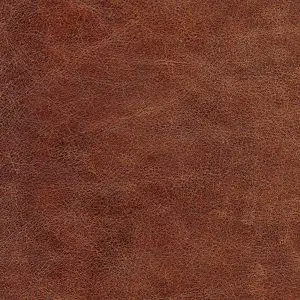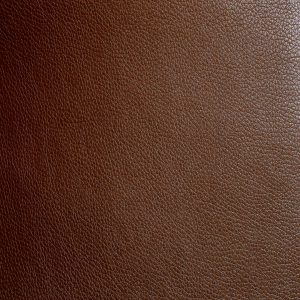The synthetic leather industry is thriving continuously and it’s becoming harder to tell whether a leather jacket is made out of real or faux leather. Sometimes, expensive leather products can be deceiving since leather goods can be high-quality and still be fake. If you want to make sure that a leather jacket is made out of real leather, then keep on reading.
Is genuine leather real leather?
Yes. However, being genuine doesn’t mean it’s a good product. Genuine leather is a layer of leather that is found below the high-quality top-grain and full-grain leather. Genuine leather is usually a byproduct after separating the upper-grain leather from the lower, loose-fibered leather which becomes genuine leather or suede.
What is real leather?
Real leather is anything that comes from an animal’s skin. Genuine leather is still real leather, but being genuine does not ensure the quality of the leather. If you want the best leather, keep your eye out for anything that is labeled ‘pure leather,’ ‘top-grain leather,’ or ‘full-grain leather.’

What is real leather made of?
Real leather is made of animal hide. Bonded leather is not considered real leather as it mixes synthetic materials with leather scraps to make a leather-like material. Real leather is made of natural materials through and through. It will not have synthetic materials supporting it or added to it.
How long does a real leather jacket last?
Real leather jackets can last up to 20 years depending on how well it’s taken care of and the build quality. Cheaper genuine leather jackets may only last 3-5 years as their construction may be weaker and will break down more easily.
However, if your jacket is made of grain leather and professionally handmade, then it might even last more than 20 years.
How to tell if a leather jacket is real
If you want to know whether you own a real leather jacket or you’re planning to buy one, you can use these methods to identify real leather.
Identify the leather material
The first thing you should do is identify the type of leather material that your leather jacket has. Real leather encompasses many different types of leather materials such as full-grain, top-grain, genuine leather, and suede. The rule of thumb here is that it is real leather if it’s made from any animal hide.
Here are some of the most common animal hides used in most leather jackets:
- Cowhide
- Sheepskin
- Lambskin
- Goatskin
- Calfskin
- Buffalo leather
- Deer leather
Check the label
The easiest way to identify whether you have a real leather jacket is to check its label or its tag. Oftentimes, most leather products come with a label that says if it’s genuine leather or man-made material. If it says that your leather jacket is a man-made material then that means it’s a faux leather jacket.
Use your senses
This is probably the most obvious way to know if you have a real leather product. If your leather jacket lost its tags, you can use this method instead. Always remember that real leather might have wrinkles and creases on them signaling that they are made from real animal skin. However, you should be extra careful since manufacturers are now getting better at mimicking the texture of real leather.
Touch
Press into the surface of your leather jacket. If it wrinkles as your skin would, then there’s a high possibility that it is real leather. Faux leather materials usually don’t wrinkle, will remain rigid, and will just depress down under your touch.
Real leather also has some give and stretch to it while faux leather is less flexible.
Smell
Real leather will have a natural smell that smells like wood or oak. Faux leather will smell artificial and have that ‘factory smell.’ It is worth noting that many cheap genuine leather products may also have an artificial smell to them as they are mass-produced.
The smell test is best used to identify whether a product is handcrafted pure leather or cheap faux or mass-produced leather.
Texture
Real leather, if it is not a corrected grain leather or cheap leather, will have inconsistencies in its pattern. Faux leather is stamped with a pattern that mimics real leather. However, you may notice some repeating patterns or the pattern being too even.
 real leather |  fake leather |
You may also notice that there are no pores on faux leather on very close inspection, while real leather will have visible pores all over the surface and isn’t very evenly spaced out.
Cheaper genuine leather will usually have a synthetic coating on top that will also mimic real leather. This is ideal to identify between high-quality leather and cheap or faux leather.
Use the fire test
People use the fire test only if they’re desperate to know if they own real leather. Obviously, we advise against this as it can be dangerous and will leave a small damaged patch on the corner of your leather jacket. If you want to try this, then do so with caution.
Things you will need:
- Lighter
Steps:
- Use the underside or the most hidden part of your leather jacket as this method will definitely leave a burn mark.
- Hold a flame up using a lighter on a small hidden area of your leather jacket for about 5-10 seconds.
- Determine whether it smells like burnt hair or burnt plastic. Faux leather will catch flame quite easily and will smell like plastic burning.
- Real leather will not catch flame very quickly and will just leave a slight char on the area. It will also smell like burnt hair.
- Make sure that the flame is put out and there is no smoke left.
Moisture test
If you want to identify leather using the moisture test, don’t do this on brand-new items or items you haven’t bought yet as it could leave a stain or blemish that will make it more difficult to sell the item.
Use this method for items you already own and be conservative when doing this test to avoid exposing the item to too much moisture.
Use a single drop of water and check if the leather absorbs the water. You can also massage with your fingers to feel if there is a change in texture or softness. If the area becomes softer and easier to stretch, it is real leather.
Faux leather doesn’t usually absorb water unless it is a more expensive type of faux leather that mimics real leather more closely and has artificial pores.
Weight
Real leather is much heavier than faux leather. Faux leather is usually made of a foam-like base with a hard plastic leather layer on top. Its density simply does not compare to real leather as real leather has very dense skin fibers that give it a lot of strength. Along with the fibers is also the moisture that leather contains which adds to the weight as well.
If your leather jacket is significantly heavy, then there’s a good chance that it’s a real leather jacket.
Check for imperfections
There are two ways that you can do this– by checking the edges and by lightly bending the material. First, observe the edges of your leather jacket. Real leather often has rough edges and strands that will fray around the edges if it is not burnished. On the other hand, faux leather jackets will look ‘too perfect’ because they are machine-made and machine-cut.
Second, bend the leather material slightly and look for a color change. Real leather has a distinct elasticity that you can’t just find in faux leather jackets which are often regular and rigid. When bent, real leather will change color and naturally wrinkle up.
Real leather isn’t cheap
Real leather goods rarely ever come cheap unless they’re thrifted. If you purchased your leather jacket for a high price from a trusted store that creates real leather garments then, it just might be a real leather jacket. However, this is not always the case since there are many retail stores that produce faux leather products for very expensive prices just because of the brand name.
Real leather vs. faux leather
It’s hard to hate faux leather, considering that it is the only way for vegans to buy leather products. There is no clear answer to whether real leather is better than faux leather. It will depend on your use case and the value it brings to you.
If you’re someone who doesn’t want to commit a large sum of money to buy something that you’re not sure you’ll still wear in 10 years, pure leather may not be for you. You could resell it, but faux leather is much cheaper and could be replaced more easily. It also comes in way more designs.
Faux leather might contribute to environmental pollution more than pure leather which is biodegradable and doesn’t require any special recycling process. The production of pure leather using chrome as a tanning chemical may affect the environment negatively, however. It is your choice which philosophy you should take on this.
Real leather is a clear winner when it comes to longevity, however. Real leather can last up to 20 years and even longer in rare cases. Faux leather degrades in as soon as a year or two and doesn’t develop a patina or character over time, it simply breaks down and becomes brittle.
Conclusion
If you’re looking for real leather, you’ve come to the right place. If you’re wary of your purchase and want to know if what you bought is real or not, we hope this guide has helped you figure that out.
Real leather is an amazing product that you can keep for a long time and can become a part of your identity. If you have managed to find a high-quality piece, you should check out our other articles to know how to take care of it and even restore it.
FAQ
Does real leather absorb water?
Real leather will absorb water as animal skin naturally has pores. If it’s real leather then it will absorb a drop of water in just seconds whereas fake leather which is mostly made out of plastic will just leave a puddle. However, some faux leather materials have pores created to mimic real leather so, you shouldn’t trust this factor alone in identifying fake or real leather.



